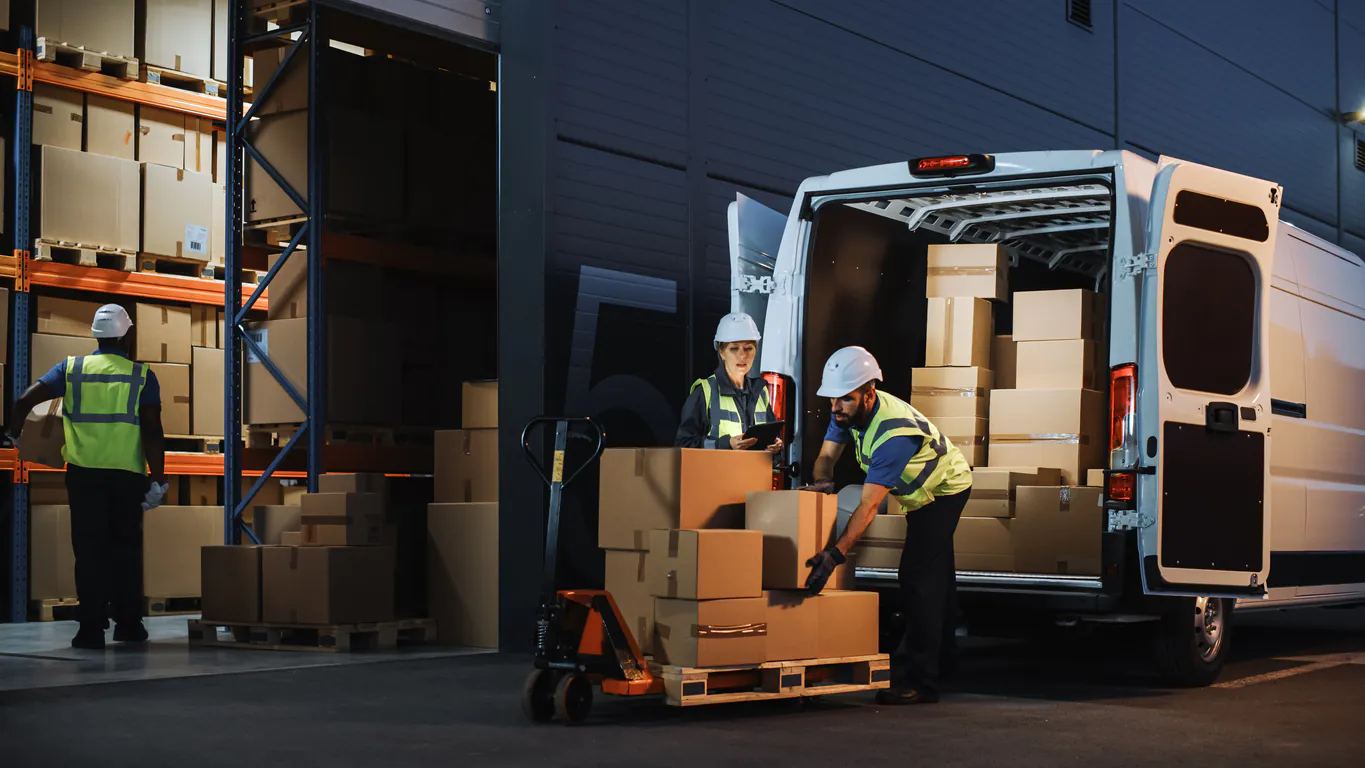In this post, I am going to show you how to build a distribution business in 15 easy steps. Distribution is the vital link between producers and retailers of goods. In many cases, a distributor serves as a buffer between the two, so each party can have more control over their respective operations. But to be honest with you, this is not just for businesses. Distributors also make it easier for companies and individuals to have access to a variety of resources that meet their needs. When you look at the whole chain from distributors to producers, you can use many different distribution models in your business. These range from the traditional three-tier model used in most retail companies today, to the two-tiered approach popularized by many franchise businesses.
A distribution business is an excellent way to start your own business. It is one of the most popular ways to start a business because it is easy to set up and manage. This means you can start doing it as soon as possible so that you can earn some money for your family.
However, if you are new in this field, then you should know that the distribution business is not as simple as it seems to be. For this reason, we have prepared this article for you which will guide you through all the steps that you need to follow while starting a distribution business.
Step 1: Write your Distribution Business Plan
The first step in starting your own distribution business is writing a distribution plan or strategy. You should know what kind of products will sell best in your area and how much money people are willing to spend on these items. In addition, you also need to identify specific customers who will buy these products at fair prices and high-quality standards.
Before you can begin building your distribution business, it’s important to understand what you’re getting yourself into.
If you haven’t already done so, write a business plan for your distribution company. It doesn’t have to be a formal document, but it should contain the following information:
- A description of the products or services you intend to distribute.
- The geographic area you intend to service.
- An estimate of your sales and costs for your first year in business.
- A description of how you will use working capital (cash) and long-term financing to fund operations until profits begin flowing.
- A list of resources you will need in order to open for business — including equipment, supplies, and personnel (employees).
Discover how BizVibe is helping million become a distributor.
Step 2: Select your product
The first step in building a distribution business is to select your product. There are many different products that you could sell, but you need to make sure that you have enough capital and that the product offers good margins. When it comes to selecting a product, consider what will be the most profitable for your business. If you’re not sure which products offer good margins, check out our guide on how to find profitable products to sell.
Step 3: Form a legal entity+
In order to start selling products, you need to form a legal entity and register it with the government. This is because selling products requires a lot of paperwork and taxes that need to be paid by an individual can be very complicated. By forming an LLC (Limited Liability Company), you can protect yourself from any liability issues since it protects personal assets from creditors if something goes wrong with the company. The good thing about forming an LLC is that you don’t have any limits on how many members there are in your business or how many shareholders you have; however, there are some restrictions on who can form one (only individuals).
Step 4: Establish your niche
Once you’ve decided on a product, it’s time to decide what kind of distribution model you want to pursue. There are two basic options: retail, wholesale, and drop shipping.
Retail sales
The most obvious option is to open a physical store that sells your products directly to customers. This is probably how you think about starting a business, since it’s the easiest way to get started and see immediate results. The downside is that running a brick-and-mortar store is expensive and time-consuming — and if you don’t have experience running one, it can be difficult to succeed at first (especially if you don’t have any prior ecommerce experience).
Wholesale distribution
Another way to distribute your products is by working with other retailers who already have established customer bases. This means signing up with distributors and wholesalers who will handle order fulfillment for you (i.e., get your products from the manufacturer and ship them directly to customers). This can be an appealing option because it lets you focus on selling rather than logistics or customer service — but it also means getting paid less per sale because there are multiple layers of markup.
Step 5: Decide if you want to be an independent distributor or a direct sales rep
Independent distributors are independent contractors who sell products and services on behalf of the company. Direct sales reps work for themselves, but they represent a specific company and earn income from selling its products or services. Both types of distributors must register with the state and federal governments as self-employed businesses.
Step 6: Register your business name and get your business license if necessary
If you’re going to be selling products directly to consumers, you’ll need a seller’s permit or retail license in most states. If you’re going to be selling products through retail establishments or other wholesale channels, you may not need this registration at all — check with your state government to find out what’s required where you live.
Step 7: Register for taxes
As an independent contractor, you’ll need to pay self-employment taxes on any income from your new business — including any bonuses or commissions that might come along in later years. You may also have to pay income taxes if your monthly income reaches certain thresholds (typically $400/mo for individuals in most states). It’s always best to consult with a tax expert before launching any new enterprise.
Step 8: Obtain necessary permits and licenses
Before you start your distribution business, you’ll need to obtain all the licenses, permits and other documents required by your state. These may include:
Business license. Every state has its own rules for starting a business, but most require a business license issued by your county or city government. You can usually apply online for a business license, although some jurisdictions require you to visit your county clerk’s office in person. Depending on where you live, the cost of a license may range from $25 to $100 for each location in your business.
Sales tax license. Every state requires businesses that make sales within its borders to register with that state’s Department of Revenue and obtain a sales tax identification number (STID). You can register online using an application form available on the website of the department or by calling their customer service center at 800-252-8980. The cost is generally $30-$50 annually per location in your business.
Employee identification number (EIN). Also known as an Employer Identification Number (EIN), this is another type of identification number that’s used when reporting taxes on income generated by self-employment and sole proprietorship
Step 7: Get business insurance
It’s important to have proper insurance coverage in place before opening your doors. This will protect you if someone is injured or there’s damage to property, as well as protect against liability claims if someone gets sick after eating at your restaurant. You’ll also want to make sure that all of your employees are covered by workers’ compensation insurance.
Step 8: Define your brand
The next step is defining what makes your restaurant unique and what sets it apart from other restaurants in the area. A strong brand helps set new restaurants apart from the competition, so take some time to think about how you want to present yourself — and how you want people to perceive you.
Step 9: Set up your online presence
If you’re going to be selling products or services on a website, it’s important that people can find you online. So if you don’t already have a website, now is the time to create one! If you do already have one, make sure it’s up-to-date and easy to navigate.
Step 10: Establish an accounting system/bookkeeping process now – so you’re not scrambling at tax time!
You’re going to need some way of tracking all of your expenses, income, and other financial records so that when tax time comes around each year (and it will!) you can easily file all of those forms and get money back from the government if necessary. The best way to do this is by setting up some sort of accounting software like QuickBooks or Xero so that everything is neatly organized by category and date, with no confusion about where the money went or came from and when it was spent or earned.
Step 11. Develop your business skills
The first step to building a distribution business is to develop your business skills. This means learning about inventory management, customer service, sales, marketing and other areas of the business. Even if you have never worked in the industry before, there are many resources available online that can help you learn what it takes to run a successful distribution company.
Step 12: Contact manufacturers
Once you have learned some basic skills, contact manufacturers directly and ask them if they would like to sell their products through your distribution channel. This may be easier said than done because many manufacturers don’t sell directly to distributors or wholesalers; instead, they prefer to sell directly to retailers or customers who buy direct from their website. However, some manufacturers will be willing to work with a new distributor and might even offer special incentives for new partners. For example, they might give you a discount on their products or allow you access to special promotions that aren’t available elsewhere.
Step 13: Consult with retailers
Consult with local retailers about their needs for new product lines and services. Offer yourself as a consultant by providing them with advice on ways to improve their sales and profits through better merchandising practices or by helping them find new products that will appeal more directly to their customers than what they currently offer in their stores.
Key Takeaway
Distribution is a field that requires constant growth and renovation for the operating company to compete successfully in the marketplace. From simply adopting new technologies to battling larger companies, entrepreneurs need to stay ahead of their competition.
The time is nigh for ethical, sustainable, niche-driven business owners from all over the world to assemble, and together we will positively transform our industries. Our businesses will give back in many ways. We are on the precipice of a revolution, a movement that has already begun by some. And you’re cordially invited to join us. Consider this an invitation to start your own distribution business. Here are 15 steps that’ll get you there.



